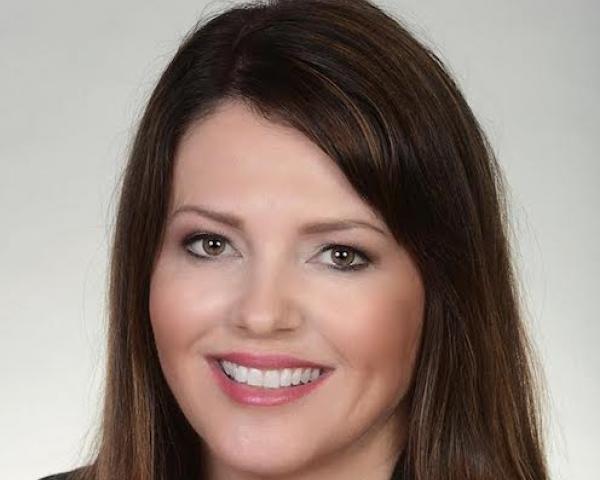With almost 25 years of experience in the insurance industry, I have seen and experienced a lot of challenges, successes and changes, including when it comes to diversity and inclusion (D&I). However, some of the most important lessons I’ve learned about D&I came from my time in the military.
My nine years in the U.S. Navy and Navy Reserve showed me that there is truly something special about a community that brings people from so many different walks of life together toward a common goal. When I chose to enter the insurance industry, I felt that the industry could benefit from a similar experience. I also felt there were military veterans who could benefit from having allies within the industry. While I made the transition from the military to the corporate world successfully, that transition would have been facilitated by connections to a community of people who had walked a similar path.
Today, I hope, our industry has made it easier for military veterans and others from all backgrounds to make those workplace connections with members of their own communities. After many years of talking about D&I, insurance organizations have taken concrete steps over the past decade to begin to create a culture of inclusion that provides a safe and welcoming space for all.
While every organization is at a different level of maturity in their D&I journey, I see plenty of encouraging signs. I’ve noticed the D&I panels I sit on are more diverse these days. So, too, are many corporate boardrooms. Yet there is still plenty of work to do. Taking these five steps can help organizations further their D&I efforts to push our industry forward.
1. Make a concerted effort and dedicate resources.
The organizations within our industry that have enjoyed the greatest level of D&I success all share one thing: They put a concerted effort behind creating a more inclusive culture. A key is having strong support from senior leadership. Another is naming a single leader to be responsible for the success of all your D&I efforts. This will help develop a high level of accountability. In fact, according to LinkedIn data, over the past five years, the number of people with the head of diversity title more than doubled, and there has been a 71% increase in all D&I roles.
At Markel, our leaders have been busy working with our team members to build, maintain and enhance initiatives to develop a more diverse and inclusive workplace and to support our community. For example, we are working to encourage and attract more diverse talent through scholarships to colleges and universities with diverse populations. Those scholarships have been augmented by internships and an underwriting training program that has brought more diverse leaders to Markel.
2. Create opportunities for communities to connect.
The military exposed me to a diverse community where I experienced the power of people coming together. I couldn’t wait to translate that experience into the corporate world. Early in my career, I helped form the Markel Veterans Network, which was one of our first employee resource groups (ERGs).
The Markel Veterans Network started humbly—our first meeting had four participants. But I knew immediately that it would be beneficial. It gave me a way to meet other veterans who were working in the organization. Because we shared the experience of serving in the military, we could speak the same language and develop a strong network of support for one another both inside and outside the workplace.
Over the past several years, ERGs have become a powerful way for employers to show their support for employees and for D&I initiatives. Support for ERGs has become widespread throughout the insurance industry and beyond. In fact, 90% of Fortune 500 companies today have at least one ERG.
I’m proud to say the Markel Veterans Network remains strong today and stands alongside six other ERGs, including networks for Black associates, Asian associates, female associates, newer associates, LGBTQ+ associates and Hispanic-Latin associates and an inclusion network supporting associates in our international operations. Each one has an executive sponsor and commits to meeting at least once a month. Markel leadership supports anyone within the organization who sees the need to start an ERG.
See also: Where a Customer-Focused Culture Starts
3. Provide mentorship.
Companies should provide an environment that encourages a mentoring atmosphere, whether it is formal or informal. There are many benefits to providing mentorship. It is a two-way street that supports the growth of both the mentor and the mentee. Mentorship programs are also beneficial for businesses. They increase employee engagement, retention and inclusion, as well as training for employees to rise up and fulfil internal roles.
The best thing about mentorship is that everyone can participate. To me, mentorship offers an opportunity to give back to our industry and advance our D&I efforts. During my career, I have picked diverse mentors and would encourage others to do the same. In addition, my mentees frequently come from different backgrounds and cultures than I do, which allows me to learn as much from them as they do from me—sometimes even more. I challenge all leaders in our industry to make time to become a mentor today. Doing so will help introduce your colleagues and your company to new perspectives.
4. Measure your progress.
D&I isn’t always easy to measure. Sometimes, you can find quantitative data. For example, at Markel we know that female leadership within our senior management team increased by 50% from 2019 to 2021. But many other measurements are qualitative. Employee engagement surveys offer one potential way to learn how much buy-in your D&I efforts have achieved.
According to Harvard Business Review, while employee sentiment is important to tracking progress, measurements are only effective if the organization has a clear definition of what they are measuring. It is important to ask questions such as, “What does diversity mean within my organization,” or “How do we define inclusion?” Only once there is a universal understanding of these ideas can progress truly be tracked.
Another idea: Start a conversation. I love grabbing a cup of coffee or lunch with different people and teams and asking them, “How do you feel we’re doing with D&I?” By asking this question, you’re showing your colleagues that your organization is a safe space where all opinions are welcome. Once you set that foundation, you’ll get the purest level of feedback possible.
5. Share ideas and programs with others.
Taking a top-down approach to D&I is a good start. But the real change happens when we take individual and personal responsibility for including others and creating the diverse future we want. This is where allyship becomes key. It doesn’t take much to be an ally: Lending an ear or raising your voice for someone can make a difference in creating an environment where everyone feels safe and happy to come to work. When this happens, ideas flow, and innovation is fostered.
One potential way for you to step up: Join one of the Inclusion in Insurance Regional Forums that the Insurance Industry Charitable Foundation (IICF) is hosting this summer in New York, Los Angeles, Chicago and Dallas, and in London in September. When we as an industry get together and engage with organizations that create and foster inclusivity, we help create better work communities.
So, what does the future of D&I look like in insurance? My personal hope is that, in 10 to 15 years, D&I won’t need to be a driven topic of conversation but will be found at the foundation of every company culture. I genuinely believe we’re on the path to getting there if we continue to put the effort, time and budget into creating a more diverse industry.






